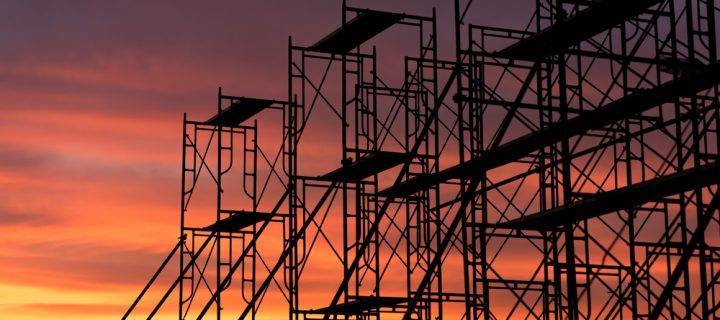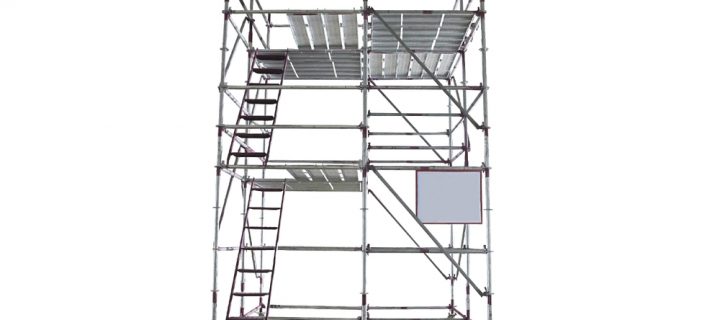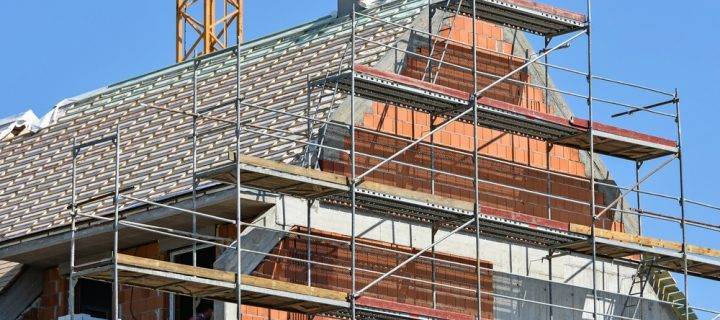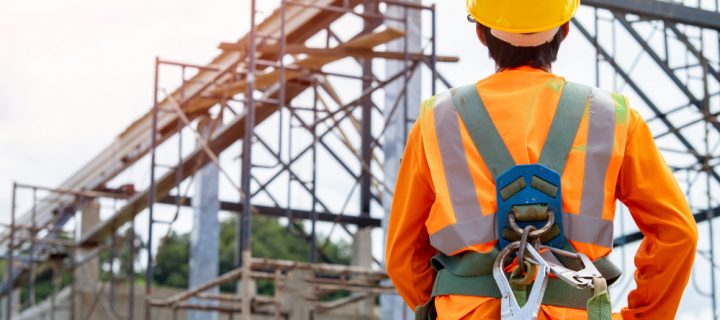There are plenty of misconceptions regarding working at height and the use of scaffolding. Here at Network Scaffold Services, we have years of experience supplying scaffold, alloy towers and access scaffolding to clients all across Derby. This is the reason we have put together this guide, so if it is your first time working with us, you know what to expect. When Do I Need Scaffolding? It is the decision of your trader to assess the level of risk and use the most appropriate equipment. For example, fixing a single broken tile on a low roof isn’t the same as installing solar panels 20 stories up. Traders need to ensure their staff are completely safe when working on a property, which means working from the ground, if possible. If working at height is required, the risk of falling must be minimised by using scaffolding. Do I Need a Scaffold Licence? If your builder or scaffolder needs to erect the scaffold within the boundary of your property there is no need for a licence. However, if any part of the scaffold needs to be placed on pavement or the road outside the property, the builder or scaffolder needs to obtain a licence from your local council. While it is their responsibility to get the licence, you will need to check that they have the appropriate paperwork. If there is a risk to the public you must schedule scaffolding work for quiet times or get a highway closure from your local council. Who is responsible for health and safety? For work completed on your home that is not connected with any business; the builder, scaffolder or contractor supplying the scaffolding is responsible for maintaining safety on the site. The rules are different for individuals, partnerships or companies that have construction work carried out as part of their business practices. Property developers and companies managing domestic properties like landlords, rental agents or estate agents fall under this bracket. The Construction (Design and Management) Regulations 2015 state that their main responsibility is to ensure their project is suitably managed and the health and safety of anyone who may be affected by the construction work, including the general public. Contact Network Scaffold with any...
Read Moreabout What are the rules regarding scaffolding?Alloy towers are one of the most important parts of our scaffolding services, but do you know how to erect them? For this blog, Network Scaffold will share our 12 step guide to erecting stairwell alloy towers. 12 Steps to Using Stairwell Alloy Towers Have two people available to erect all towers for safety reasons. Before the tower is erected you will need to ensure site conditions are safe. Operatives need to be competent and familiarise themselves with the manual for assembly. Sufficient equipment also needs to be available to erect the tower at the height required whilst checking components are not damaged or incompatible plus checking the tower breakdown. Insert the adjustable legs and baseplates into the opening base ladder frames. Place the two ladder frames on the staircase in the position required, roughly 1.5 metres apart with the baseplates fully located on the steps of the staircase with the offset plate facing inwards towards the centre of the frame. Connect the two bottom rungs of the frames using a diagonal brace. The brace hooks should be located at the centre of the bottom rungs of the ladder frames which prevents clashing using an erection platform. Level the frames by turning the adjustable leg nuts so that the bottom rung of the frame on the upper step is at the same level as the top rung of the frame on the lower steps with the adjustable legs extended if necessary to achieve this. Fit a trapdoor platform with the trapdoor end located at the lower part of the stairs, to the bottom rung of the frame on the upper step and to the top rung of the ladder frame on the lower step. Make sure the platform is level. There is a small bubble level on the underside of all stair deck alloy towers to ease levelling. This platform will be used for the temporarily safe erection of the tower and will be removed later when being used further up the tower. From the bottom of the staircase, fit a six rung upper frame to the top of the ladder frame on the lower step. Lock the frames together with the interlock clips. Climb into the middle of...
Read Moreabout How to Erect Stairwell Alloy TowersA new mixed-use development has been announced for the edge of Nottingham, which will create 3000 homes with plenty of scaffolding needed. The £83m packages of Government funding will support the delivery of the infrastructure at Fairham and create new homes and jobs in the area. This project will also deliver a new school, community centre, health centre, sports pitches, community parks plus woodland. Robert Hepwood, Land and Planning Director at Clowes Developments, said: “This funding package from the Government really helps us to make progress on-site across Fairham and start to realise our vision of a green and distinctive new district for Nottingham. “By working in partnership with public bodies we can now accelerate the delivery of new jobs and new homes for Nottinghamshire. We’re sure that people will begin to see further progress on-site throughout this year with our first new homes due to start construction in the autumn.” Next, we will discuss why scaffolding will be crucial to help the project be completed in the quickest time. Knowing When You Need Scaffolding Scaffolding from Network Scaffold Services is required once a thorough risk assessment has concluded it is needed. A risk assessment must by law be carried out on any job where any employees are working at height. It is not a legal requirement when an individual is completing the work privately, but it is common sense to take your safety seriously. Employees that are working at height must by law be safeguarded. Although low-risk jobs such as minor roof repairs to domestic properties could use a ladder, we would always recommend utilising scaffolding or a working platform for Health and Safety reasons as they increase stability and reduce the risk of accidents happening. If you are planning to be working at heigh for long periods of time or moving about at height, then it is important to have a safe working platform such as an appropriately designed scaffolding system. Talk to the Experts If you have a domestic or commercial project in the planning stages, don’t forget to enquire about scaffolding from Network Scaffold. For more information please contact us...
Read Moreabout New Homes in Nottingham Will Need ScaffoldingFall protection systems for scaffolding are a system that is implemented to prevent a fall from occurring on-site. For this blog, Network Scaffold Services will talk you through fall protection systems in greater detail. They should be appropriate for the intended task with scaffolders fully trained and competent in how to use them safely. All equipment needs to be inspected regularly (on a monthly basis) by a competent person and before each use. If a worker falls, the arresting force on the safety harness must be under 610kg. Lanyards need to be suitable for use plus the size of the worker. Anchor points must be reasonable and ready to take the force of someone falling. You will need to have procedures and an emergency plan in place describing in detail how to rescue a worker who falls from height. Individuals using fall arrest systems cannot work alone. What are Different Types of Fall Protection Systems? Personal fall protection systems will ensure an individual worker is protected while work is undertaken at height and as already stated, must be appropriate for the intended work. A fall restraint system prevents the worker from getting too close to some place they could fall from. Work positioning systems will allow a worker to be stable when working hands-free. Fall arrest systems will catch an individual or a worker if they fall and can be used with a life rail system and horizontal lifeline that allows them horizontal movement while being hooked on. This type of system requires a high level of supervision and competency. All workers must be fully trained for using fall arrest systems and safety harnesses. Ongoing competency needs to be demonstrated and assessed. Get in Touch with the Scaffolding Experts If you would like to know more about fall protection systems, please do not hesitate to contact Network Scaffold Services today. We are the leading scaffolding providers for domestic and commercial clients across Derby and the surrounding...
Read Moreabout Understanding Fall Protection Systems for ScaffoldingHere at Network Scaffold Services, we specialise in offering scaffolding services across Derbyshire, Nottinghamshire, Loughborough, Staffordshire and the surrounding areas of the Midlands. With a vast array of services available that all adhere to the latest health and safety regulations, we’re well equipped to help with any queries that you may have. One of our FAQs is people asking what scaffolding they may need. In order to explore this in more depth, we’ve put together the following article. It’s extremely important to give scaffold services full consideration as cutting corners can often lead to potentially fatal results. 2019 saw scaffolding injuries fall to an all-time low according to the NASC with only 74 incidents reported throughout the year. Our commitment to keeping safe, from pedestrians to your workers, means that we’re aiming to continue bringing this number further and further down. Bespoke Scaffolding Required Due to the Work at Height Regulations 2005, it is required that your scaffolding is assembled to a generally recognised standard configuration. It must also be designed using bespoke calculation ensuring that adequate strength, rigidity and stability are guaranteed whilst it’s being erected, used and dismantled. Here at Network Scaffold Services Stafford, we understand that and work hard to ensure that any scaffold gets properly designed around your project’s specification. In order for us to be able to design your bespoke scaffolding across Derbyshire and the surrounding Midlands, we will need certain information to base our design upon. This includes a variety of information including anything from the location of the site to the maximum working loads to be imposed on the scaffold. To see the full list of information to include, you can take a look at our scaffold design page. What Bespoke Scaffold Design is Available? Here at Network Scaffold Services Stafford, we have provided scaffolding for a variety of sites across Derbyshire, Nottinghamshire, Loughborough and Staffordshire. Therefore, you can trust us to cater for a wide variety of projects. In order to provide our clients with the ultimate experience, we also offer the following services: Access Scaffold Erecting Edge Protection Alloy Towers As a part of each of these services, our team can work alongside you to understand your needs and supply...
Read Moreabout What Scaffolding Do I Need?



